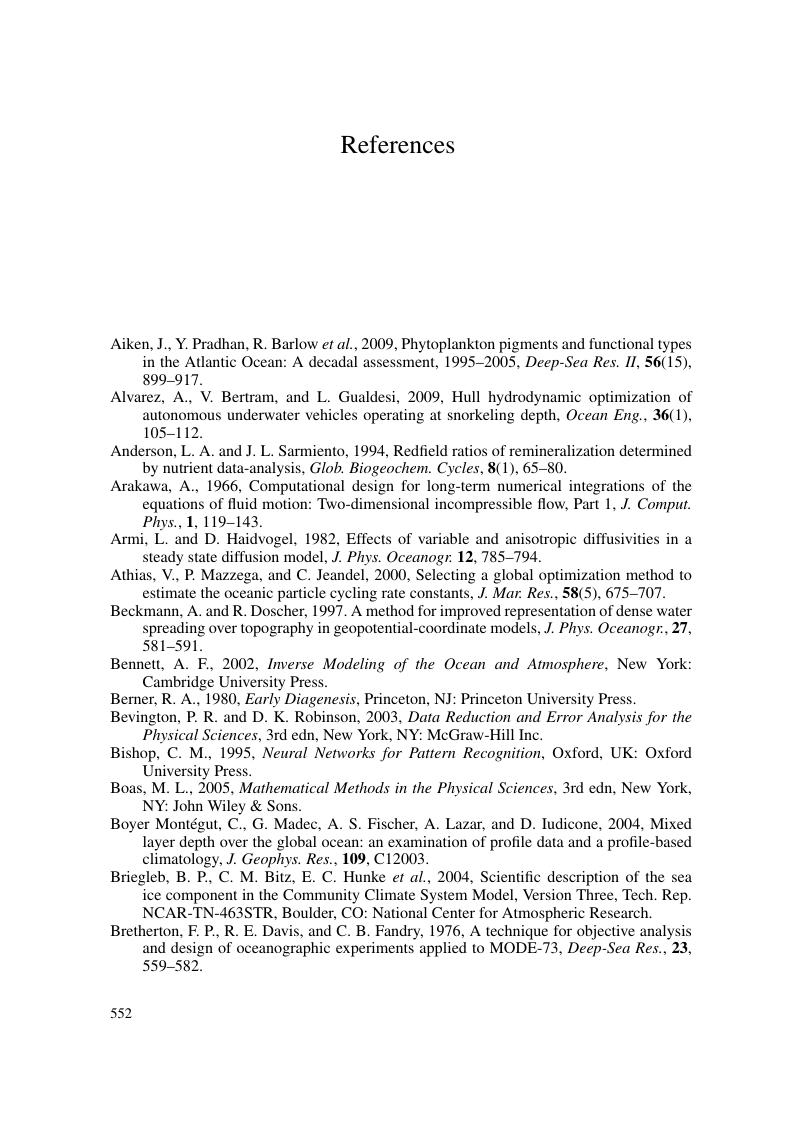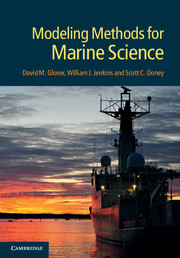Book contents
- Frontmatter
- Contents
- Preface
- 1 Resources, MATLAB primer, and introduction to linear algebra
- 2 Measurement theory, probability distributions, error propagation and analysis
- 3 Least squares and regression techniques, goodness of fit and tests, and nonlinear least squares techniques
- 4 Principal component and factor analysis
- 5 Sequence analysis I: uniform series, cross- and autocorrelation, and Fourier transforms
- 6 Sequence analysis II: optimal filtering and spectral analysis
- 7 Gridding, objective mapping, and kriging
- 8 Integration of ODEs and 0D (box) models
- 9 A model building tutorial
- 10 Model analysis and optimization
- 11 Advection–diffusion equations and turbulence
- 12 Finite difference techniques
- 13 Open ocean 1D advection–diffusion models
- 14 One-dimensional models in sedimentary systems
- 15 Upper ocean 1D seasonal models
- 16 Two-dimensional gyre models
- 17 Three-dimensional general circulation models (GCMs)
- 18 Inverse methods and assimilation techniques
- 19 Scientific visualization
- Appendix A Hints and tricks
- References
- Index
- References
References
Published online by Cambridge University Press: 05 June 2012
- Frontmatter
- Contents
- Preface
- 1 Resources, MATLAB primer, and introduction to linear algebra
- 2 Measurement theory, probability distributions, error propagation and analysis
- 3 Least squares and regression techniques, goodness of fit and tests, and nonlinear least squares techniques
- 4 Principal component and factor analysis
- 5 Sequence analysis I: uniform series, cross- and autocorrelation, and Fourier transforms
- 6 Sequence analysis II: optimal filtering and spectral analysis
- 7 Gridding, objective mapping, and kriging
- 8 Integration of ODEs and 0D (box) models
- 9 A model building tutorial
- 10 Model analysis and optimization
- 11 Advection–diffusion equations and turbulence
- 12 Finite difference techniques
- 13 Open ocean 1D advection–diffusion models
- 14 One-dimensional models in sedimentary systems
- 15 Upper ocean 1D seasonal models
- 16 Two-dimensional gyre models
- 17 Three-dimensional general circulation models (GCMs)
- 18 Inverse methods and assimilation techniques
- 19 Scientific visualization
- Appendix A Hints and tricks
- References
- Index
- References
Summary

- Type
- Chapter
- Information
- Modeling Methods for Marine Science , pp. 552 - 563Publisher: Cambridge University PressPrint publication year: 2011



